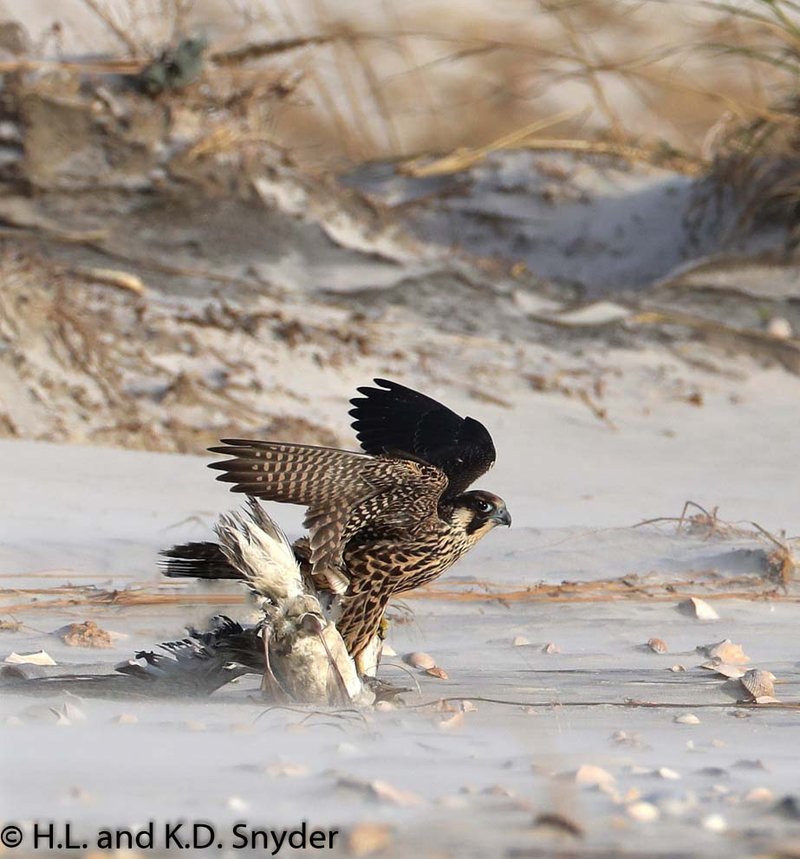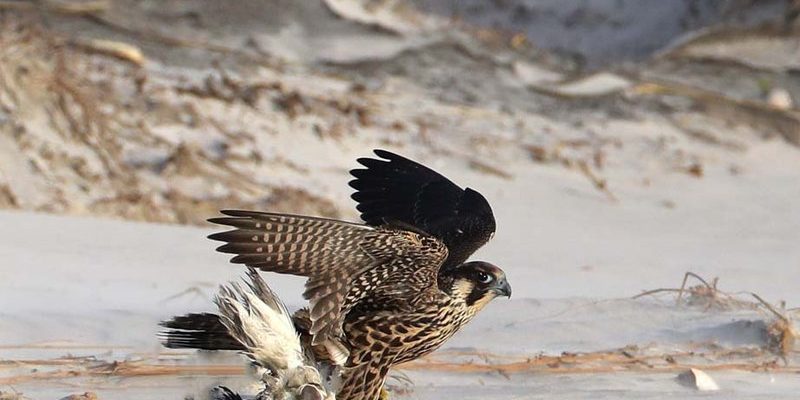
In the realm of birds, the peregrine falcon has long been shrouded in stories and misunderstandings. Some may picture it soaring through the sky as a ruthless predator, while others might see it as a fragile creature in danger. Both extremes can lead to misunderstandings about its nature and behavior. Let’s unravel the common myths and misconceptions surrounding this majestic bird so that you can better appreciate its role in our ecosystem.
Myth 1: Peregrine Falcons Are Only Found in Remote Areas
While it’s true that peregrine falcons thrive in various habitats, the idea that they only exist in remote regions is a misconception. In fact, these birds are highly adaptable. You might spot them in bustling urban areas as often as you would in vast wilderness.
Urban Environments: Many cities across the globe have established communities of peregrine falcons, nesting on tall buildings and skyscrapers. These birds have found a unique niche, using the man-made structures to their advantage. For instance, in cities like New York and Chicago, they’re often seen preying on smaller birds that flock to urban parks.
Migration Patterns: Peregrine falcons are migratory birds. During the breeding season, they may travel thousands of miles from their wintering grounds. This means they can be spotted in various ecosystems throughout the year, adapting to different climates and food sources as necessary.
Myth 2: They Are Aggressive and Dangerous to Humans
Another common misconception is that peregrine falcons are aggressive, leading to fears of them being a threat to humans. Here’s the thing—these birds are primarily focused on their survival and hunting.
Natural Behavior: Like most wildlife, peregrine falcons will defend their nests against perceived threats, which can include humans. However, attacks on people are extremely rare. Instead, they prefer to avoid conflicts and will typically fly away if approached.
Feeding Habits: Their diet mainly consists of other birds. They use their remarkable speed, diving at speeds of up to 240 mph, to catch prey mid-air. Humans don’t factor into their food chain, so there’s no need for concern.
Myth 3: All Peregrine Falcons Are the Same
You might think of peregrine falcons as a single species, but that’s not quite accurate. Within the peregrine falcon species, there are actually several variations that differ in size, color, and habitat preferences.
Subspecies Variety: There are around 19 recognized subspecies of peregrine falcons, each adapted to its own environment. For example, the *Falco peregrinus tundrius*, often found in the Arctic, is smaller and lighter than its southern counterpart, the *Falco peregrinus anatum*.
Appearance Differences: Some subspecies have varied plumage, which can help them blend into their surroundings. The coloration difference extends from the pale, almost white birds found in northern regions to the darker, more robust birds from warmer climates.
Myth 4: Peregrine Falcons Are Endangered Everywhere
While peregrine falcons were indeed endangered in the mid-20th century due to pesticide use, habitat destruction, and hunting, efforts to conserve them have been largely successful.
Recovery Success: Thanks to conservation efforts, numerous populations have rebounded significantly. Various organizations have worked on legislative reforms and habitat preservation, allowing these birds to thrive once again.
Regional Variations: Though some populations still face challenges, the overall outlook for peregrine falcons is much brighter today. They are no longer listed as endangered in many areas, although certain subspecies may still require protection.
Myth 5: They Don’t Form Pair Bonds
You might be surprised to learn that peregrine falcons are actually known for forming strong pair bonds. It’s a common myth that they are solitary creatures when in fact, they have a social side.
Monogamous Relationships: During the breeding season, peregrine falcons typically mate for life. They’ll perform aerial displays to strengthen their bond and communicate about territory and nesting sites.
Cooperative Rearing: Both partners share the responsibility of raising their chicks. They take turns hunting and protecting their young, showing a level of cooperation that many birds don’t exhibit.
Myth 6: Peregrine Falcons Are Only Good for Their Speed
Sure, the speed of the peregrine falcon is impressive, but there’s so much more to these birds than just how fast they can swoop down on prey.
Intelligence and Adaptability: Peregrine falcons are incredibly intelligent creatures. They can learn from their experiences, adapting their hunting strategies to be more effective. This adaptability extends to their environment, as they can thrive in various settings.
Ecological Impact: By controlling populations of smaller birds, peregrine falcons play a vital role in maintaining ecological balance. Their presence indicates a healthy ecosystem, making them essential players in their habitats.
Myth 7: They Are Loners
Unlike some bird species that prefer solitude, peregrine falcons are known to engage in social behaviors, especially during mating season.
Social Structures: While they may hunt alone, peregrines often gather in communal roosts, especially in migration areas. This can help them stay safe from predators and share information about food sources.
Family Bonds: After breeding, young falcons often stay close to their parents for a time before venturing out on their own, learning skills that will be essential for their survival.
Understanding peregrine falcons is about more than just their status as the fastest bird. By dispelling these common myths and misconceptions, we can appreciate how remarkable these creatures truly are. From their adaptable nature to their intelligence and social behaviors, peregrine falcons are a testament to the resilience of wildlife. If you ever have the chance, take a moment to observe these birds in the wild. You might just find a newfound respect for one of nature’s most incredible birds.

